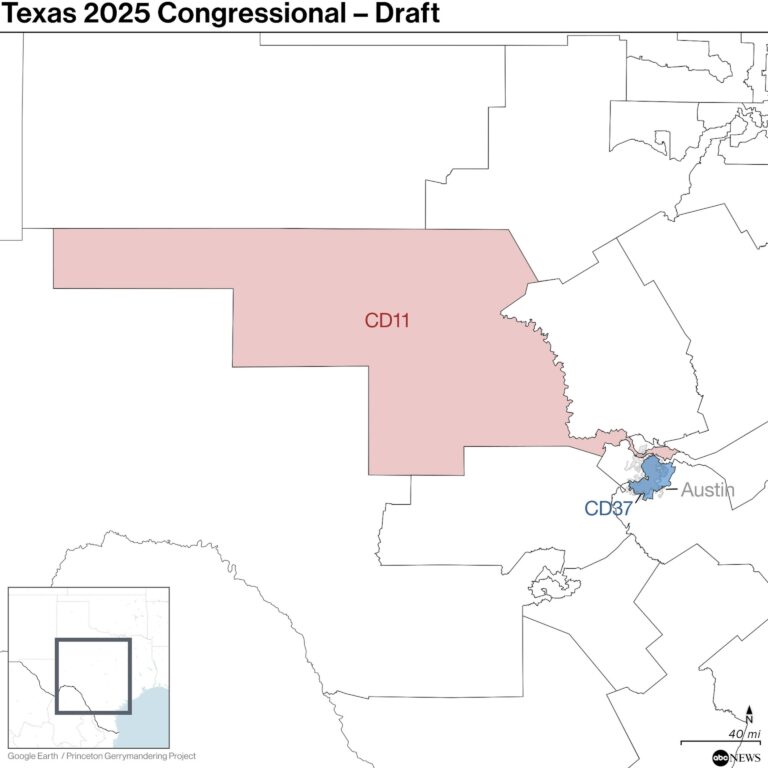Texas Redistricting Conflict: Navigating Political Divides and Electoral Fairness
Heightened Political Friction Amid Texas Redistricting Efforts
The redistricting process in Texas has become a flashpoint of intense political discord within the state legislature. Following the release of the latest census figures, lawmakers are locked in a fierce debate over how to redraw congressional and state legislative districts. Republican leaders aim to preserve their party’s dominance by crafting maps favorable to their incumbents, whereas Democrats contend that these proposals weaken minority voting power and compromise equitable representation. This ongoing struggle has sparked numerous legal disputes and legislative deadlock, jeopardizing timely completion of the redistricting process before upcoming elections.
Several underlying factors contribute to this stalemate, including shifting population demographics, entrenched partisan objectives, and mounting public demand for transparency. Advocacy groups and community organizations have rallied to ensure the process is inclusive and accountable, yet the legislature remains divided on how to proceed. Key issues currently shaping the debate include:
- Deadline Pressures: Statutory timelines impose strict deadlines for map approval, with penalties looming for delays.
- Litigation Risks: Multiple lawsuits allege violations of the Voting Rights Act and constitutional safeguards.
- Political Consequences: The redrawn districts could redefine Texas’s political balance for the next decade.
- Community Engagement: Public hearings have faced criticism for limited accessibility and insufficient transparency.
Stakeholders and Their Roles in Texas’s Redistricting Dispute
The redistricting saga in Texas involves a diverse array of influential actors, each with distinct priorities and strategies. Central to the process are state legislators, whose political careers and constituencies depend heavily on the new district boundaries. Republican lawmakers seek to safeguard their majority by endorsing maps that favor their electoral prospects, while Democratic representatives advocate for district lines that better reflect the state’s growing minority populations and demographic shifts.
Complementing these political figures are civil rights organizations and advocacy groups, which actively monitor the process, engage in public campaigns, and initiate legal challenges to protect voting rights. The judiciary also plays a crucial role, with courts frequently called upon to evaluate the legality and fairness of proposed maps. The table below summarizes the main stakeholders and their objectives:
| Stakeholder | Core Interest | Approach |
|---|---|---|
| Republican Legislators | Preserve majority control | Designing favorable districts, lobbying efforts |
| Democratic Lawmakers | Enhance minority representation | Legal opposition, public advocacy |
| Civil Rights Advocates | Safeguard voting equity | Monitoring, litigation, awareness campaigns |
| Judicial System | Uphold legal standards | Adjudicating disputes, ruling on map validity |
Judicial Interventions and Their Effects on Redistricting Progress
The influx of legal challenges has significantly disrupted the redistricting timeline, injecting uncertainty into what is typically a procedural task. Opponents of the current proposals argue that the maps disproportionately favor one party and infringe upon protections against racial gerrymandering as outlined in the Voting Rights Act. Courts have responded by issuing injunctions and mandating revisions, which have delayed legislative approval and complicated election preparations.
The consequences of these legal entanglements are evident in several ways:
- Prolonged Judicial Review: Extensive court hearings and remapping requirements extend the timeline by several months.
- Legislative Deadlock: Persistent partisan disagreements hinder consensus on acceptable district boundaries.
- Voter Confusion: Uncertainty about district lines complicates voter education and engagement efforts.
| Process Stage | Estimated Duration | Current Progress |
|---|---|---|
| Initial Drafting of Maps | Approximately 4 weeks | Completed |
| Legal Review and Challenges | 6 to 8 weeks | In progress |
| Revisions and Final Approval | 4 weeks or more | Pending |
Approaches to Resolving the Deadlock and Advancing Redistricting
Overcoming the current impasse requires a commitment to bipartisan cooperation, transparency, and respect for the diverse communities within Texas. Several strategies have emerged as potential pathways forward:
- Establish Bipartisan Committees: Creating cross-party groups dedicated to redistricting can foster dialogue and shared ownership of the process.
- Implement Independent Redistricting Commissions: Utilizing nonpartisan bodies can reduce political bias and enhance public confidence.
- Employ Advanced Data Analytics: Leveraging technology to analyze demographic and voting data can produce more equitable and precise district maps.
- Increase Public Engagement and Transparency: Expanding opportunities for community input and making proceedings more accessible can build trust and legitimacy.
Effective governance in this context demands adherence to constitutional mandates and a genuine commitment to protecting the voting rights of all Texans. A balanced and inclusive approach to redistricting can help establish a more stable political environment and prevent future conflicts. The success of these strategies will be critical in determining whether Texas can move beyond this stalemate or face prolonged legislative gridlock.
| Strategy | Advantages | Potential Obstacles |
|---|---|---|
| Bipartisan Committees | Encourages cooperation and compromise | Possibility of entrenched partisan divisions |
| Independent Commissions | Enhances impartiality and fairness | Limits direct political control |
| Data-Driven Mapping Tools | Improves accuracy and representation | Technical complexity and accessibility issues |
| Expanded Public Transparency | Builds community trust and accountability | May slow decision-making processes |
Final Thoughts on Texas’s Redistricting Challenge
As Texas continues to wrestle with the complexities of redistricting, the outcome will have profound effects on political representation and voter influence statewide. Staying informed about the evolving dynamics of this conflict is crucial for residents and political observers alike. The resolution of this dispute will not only define electoral boundaries but also reflect broader trends in political power and democratic engagement within Texas and across the nation.







